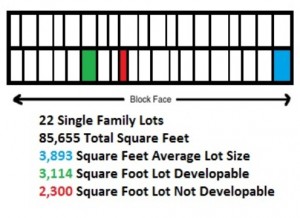DPD Tried to Regulate Small Lots;You Wouldn’t Believe What Happened Next!
Over the last part of the week I kept hearing noises on social media about problems with the Department of Planning and Development’s (DPD) efforts to constrain small-lot development. Here’s the comment that set off the biggest discussions and concerns. According to one homeowner the legislation means that about 8,755 existing homes . . .
. . .won’t be able to add a story. This becomes a big deal as prices continue to rise and people start renting out flats (see: San Francisco). Whatever the intent of this legislation, it becomes a down-zone for those 8,755 houses. It’s worth fighting this.
Publicola and KIRO also followed up on this growing concern, with KIRO airing the story at the top of this post. So what’s going on?
Everything points to the fact that the DPD’s efforts to respond to complaints from a small group of angry neighbors may have inadvertently reduced or eliminated thousands of existing homeowners from fixing up their own property.
This is a pretty big foul up if it’s true with wide impact. Think about it for a moment. A family living in a single-family home decides it wants to add a story to their home to accommodate a new child. Or maybe a family has an older parent who needs to move in for increased care. Suddenly that extra room on another floor isn’t possible. Families often decide to add on to their existing home to save money and avoid the extra expenses and disruption of moving to a new house.
And as if that wasn’t enough here’s what a local architect told me about the new legislation:
I’m rather annoyed at the pile-on of restrictions. It reads like a laundry list of paranoid restrictions put together by people who have never designed housing. I see pretty much nothing in there that reflects the input of the design community.
The problem with what DPD has forwarded is that it creates more burdens for existing homeowners and it doesn’t make anything more predictable for anyone, including angry neighbors. The legislation in its efforts to address neighborhood “concerns” has muddled the code further. The simplest thing to do is to pass what we’ve proposed: the 80 Percent Rule.
The 80 Percent Rule would address angry neighbors by giving them the ability to know exactly what could be built on a block. All they’d have to do is the math, adding up the overall lot sizes and dividing by the number of lots. If they’re worried about height bulk and scale, our proposal has a height limit of 22 feet with setbacks; that ensures a smaller house that the typical 37 height limit in most single-family zones.
Instead of pushing forward a simple solution to the problem it looks like the legislation could make things worse. Is there a way to fix this? There’s one person who can help sort all this out and get us to a solution that will work for everyone: Councilmember Mike O’Brien.
Councilmember O’Brien can help us get closer to where we were at the end of last year, a compromise that created predictability and simplicity so that the city can benefit from more reasonably priced, scaled, and efficient single-family homes. Let him know we need his help. You can e-mail Councilmember O’Brien at Mike.Obrien@Seattle.gov



